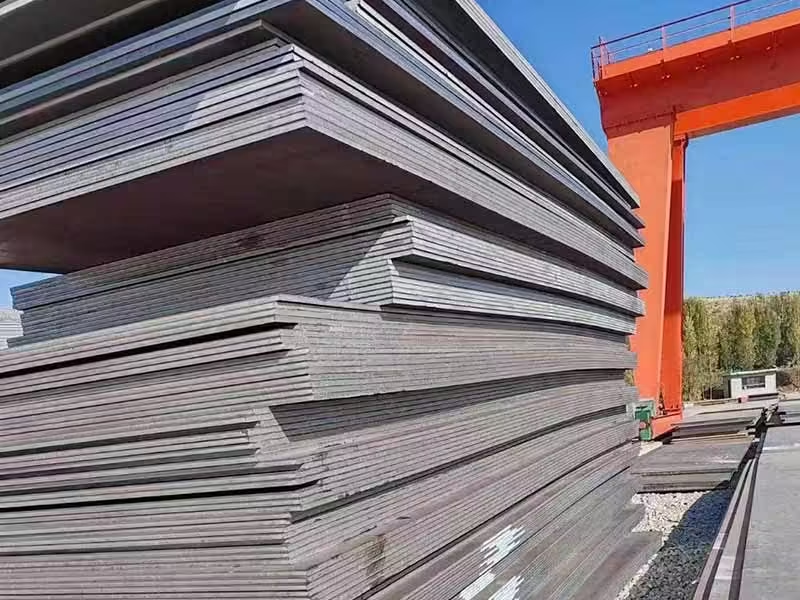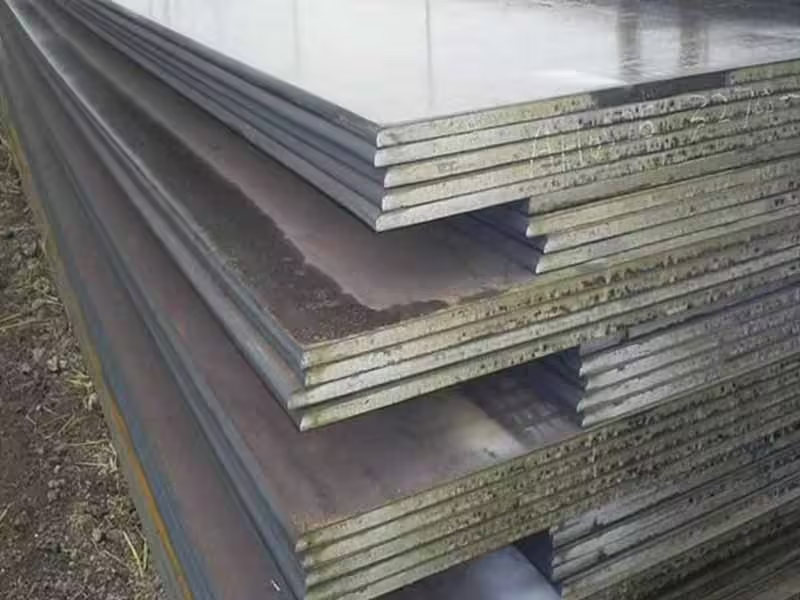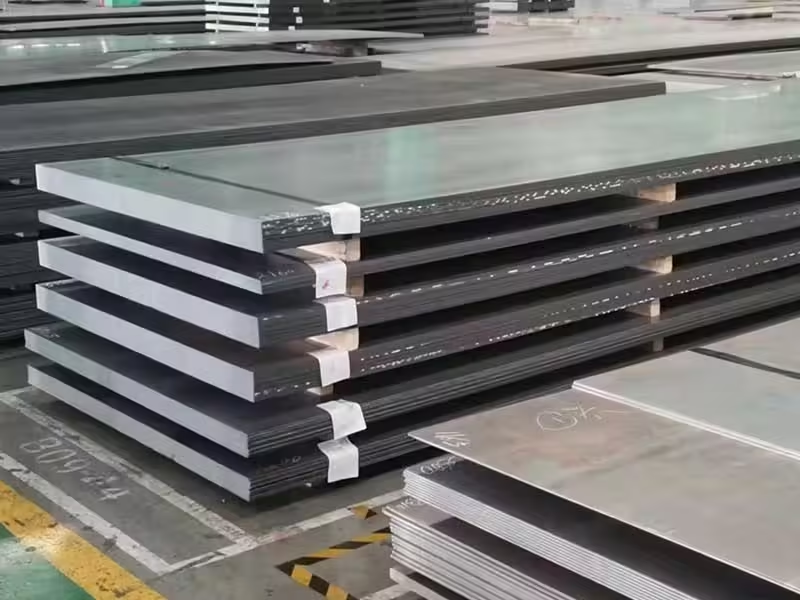Chào mừng đến với Blog của tôi!
Trước khi đi sâu vào nội dung, tôi rất muốn bạn tham gia cùng tôi trên các nền tảng truyền thông xã hội của tôi, nơi tôi chia sẻ thêm nhiều hiểu biết sâu sắc, tương tác với cộng đồng và đăng các bản cập nhật. Sau đây là cách bạn có thể kết nối với tôi:
Facebook:https://www.facebook.com/profile.php?id=61571539990739
Bây giờ, chúng ta hãy cùng nhau bắt đầu hành trình. Tôi hy vọng bạn thấy nội dung ở đây sâu sắc, hấp dẫn và có giá trị.
Mục lục
Giới thiệu
Khi bắt tay vào một dự án xây dựng hoặc sản xuất, việc lựa chọn vật liệu phù hợp là vô cùng quan trọng. Hai lựa chọn thường được cân nhắc là tấm polycarbonate (PC) và tấm thép. Mỗi vật liệu đều có những ưu điểm và nhược điểm riêng biệt, phù hợp với các ứng dụng khác nhau. Hướng dẫn toàn diện này sẽ đi sâu vào các đặc tính, ứng dụng và những lưu ý khi so sánh tấm PC với tấm thép để giúp bạn đưa ra quyết định sáng suốt cho dự án của mình.
Tính chất vật liệu: Tấm PC so với tấm thép

Tính chất cơ học
| Tài sản | Tấm PC | Tấm thép |
|---|---|---|
| Tỉ trọng | 1,20–1,22 g/cm³ | ~7,85 g/cm³ |
| Độ bền kéo | 55–75 MPa | 400–620 MPa (thay đổi tùy theo cấp độ) |
| Môđun Young | 2,0–2,4 GPa | 200 GPa |
| Độ giãn dài khi đứt | 80–150% | 15–25% |
| Khả năng chống va đập (Izod) | 600–850 J/m | Thay đổi; thường thấp hơn PC |
| Độ cứng (Rockwell) | M70 | 120–200 HB (thay đổi tùy theo cấp độ) |
| Độ dẫn nhiệt | 0,19–0,22 W/(m·K) | 50–60 W/(m·K) |
| Nhiệt độ hoạt động | -40°C đến 115°C | Lên đến 500°C (tùy thuộc vào hợp kim) |
| Chống ăn mòn | Cao | Thay đổi; thép không gỉ có khả năng chống ăn mòn |
Dữ liệu có nguồn gốc từ cơ sở dữ liệu đặc tính vật liệu và thông số kỹ thuật của nhà sản xuất.
Tính chất vật lý và hóa học
Tấm PC là polyme nhiệt dẻo nổi tiếng với độ trong suốt, khả năng chống va đập và trọng lượng nhẹ. Chúng có khả năng chống lại nhiều loại hóa chất và có độ ổn định kích thước tốt. Tuy nhiên, chúng có thể dễ bị trầy xước và xuống cấp khi tiếp xúc lâu với tia UV nếu không có phụ gia thích hợp.
Tùy thuộc vào hợp kim, các tấm thép có độ bền, độ cứng và khả năng chịu nhiệt cao. Thép cacbon dễ bị ăn mòn, trong khi thép không gỉ có khả năng chống ăn mòn tuyệt vời. Mật độ cao của thép góp phần tăng cường độ bền nhưng cũng làm tăng trọng lượng.
Ứng dụng: Nơi mỗi vật liệu đều nổi trội

Ứng dụng tấm PC
- Kính kiến trúc: Được sử dụng trong cửa sổ trời, mái che và nhà kính do tính trong suốt và khả năng chống va đập.
- Tấm chắn an toàn: Được sử dụng trong các thiết bị bảo vệ máy móc và rào chắn bảo vệ.
- Điện tử: Được sử dụng trong vỏ máy và các linh kiện cần cách điện.
- Ô tô: Được ứng dụng trong thấu kính đèn pha và các bộ phận bên trong.
Ứng dụng của tấm thép
- Sự thi công: Các thành phần cấu trúc trong tòa nhà, cầu và cơ sở hạ tầng.
- Đóng tàu: Kết cấu và gia cố thân tàu.
- Ô tô: Khung gầm và thân xe.
- Thiết bị công nghiệp: Các bộ phận máy móc và áp suất.
Cân nhắc về chi phí
Mặc dù giá cả cụ thể có thể dao động tùy theo điều kiện thị trường, nhưng nhìn chung, tấm PC đắt hơn trên mỗi đơn vị trọng lượng so với tấm thép carbon. Tuy nhiên, tính dễ chế tạo và chi phí lắp đặt thấp hơn có thể bù đắp cho chi phí vật liệu ban đầu. Tấm thép, mặc dù nặng hơn và có thể đòi hỏi nhiều nhân công hơn để lắp đặt, nhưng lại có độ bền lâu dài, giúp tiết kiệm chi phí trong suốt vòng đời của dự án.
Tác động môi trường

Tấm PC có thể tái chế và có lượng khí thải carbon thấp hơn trong quá trình sản xuất so với thép. Tuy nhiên, chúng được sản xuất từ các sản phẩm có nguồn gốc từ dầu mỏ, gây ra lo ngại về tính bền vững. Sản xuất thép tiêu tốn nhiều năng lượng, nhưng thép có khả năng tái chế cao, và cơ sở hạ tầng tái chế thép đã được thiết lập tốt trên toàn cầu.
Độ bền và bảo trì
Tấm PC có khả năng chống va đập tuyệt vời và không bị ăn mòn, phù hợp với môi trường có độ ẩm và hóa chất. Tuy nhiên, chúng dễ bị trầy xước và có thể cần lớp phủ chống tia UV khi sử dụng ngoài trời.
Tấm thép có độ bền cao, có thể chịu được nhiệt độ cao và tải trọng nặng. Thép cacbon cần được phủ lớp bảo vệ hoặc mạ kẽm để chống gỉ, trong khi thép không gỉ có khả năng chống ăn mòn vốn có, giúp giảm nhu cầu bảo trì.
Phần kết luận
Việc lựa chọn giữa tấm PC và tấm thép phụ thuộc vào yêu cầu cụ thể của dự án. Nếu bạn cần vật liệu nhẹ, trong suốt và chống va đập, tấm PC là một lựa chọn tuyệt vời. Đối với các ứng dụng đòi hỏi độ bền, độ bền và khả năng chịu nhiệt cao, tấm thép là lựa chọn phù hợp hơn. Hãy cân nhắc các yếu tố như điều kiện môi trường, yêu cầu tải trọng, sở thích thẩm mỹ và hạn chế ngân sách khi đưa ra quyết định.
Câu hỏi thường gặp
Câu hỏi 1: Tấm PC có thể được sử dụng cho các ứng dụng kết cấu không?
A1: Tấm PC thường không được sử dụng cho các ứng dụng kết cấu chính do độ bền kéo thấp hơn thép. Tuy nhiên, chúng phù hợp cho các cấu kiện không chịu lực và các lớp chắn bảo vệ.
Câu 2: Tiếp xúc với tia UV ảnh hưởng đến tấm PC như thế nào?
A2: Tiếp xúc lâu dài với tia UV có thể khiến tấm PC bị ố vàng và giòn. Sử dụng PC ổn định tia UV hoặc phủ lớp phủ bảo vệ có thể giảm thiểu tác động này.
Câu 3: Có nhiều loại tấm thép khác nhau không?
A3: Có, tấm thép có nhiều loại khác nhau, bao gồm thép cacbon, thép không gỉ và thép cường độ cao, mỗi loại có các đặc tính riêng phù hợp với các ứng dụng khác nhau.
Câu 4: Vật liệu nào thân thiện với môi trường hơn?
A4: Cả hai loại vật liệu đều có những cân nhắc về môi trường. PC có thể tái chế nhưng được sản xuất từ nhiên liệu hóa thạch, trong khi sản xuất thép tiêu tốn nhiều năng lượng nhưng lại được hưởng lợi từ cơ sở hạ tầng tái chế đã được thiết lập tốt.
Câu hỏi 5: Tấm PC có thể thay thế kính trong nhiều ứng dụng không?
A5: Có, tấm PC thường được sử dụng như một vật liệu thay thế nhẹ và chống va đập cho kính trong các ứng dụng như kính và màn hình bảo vệ.

